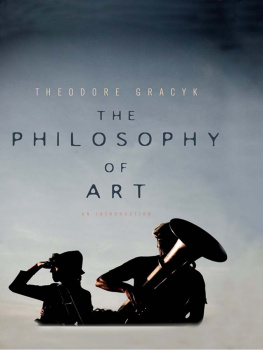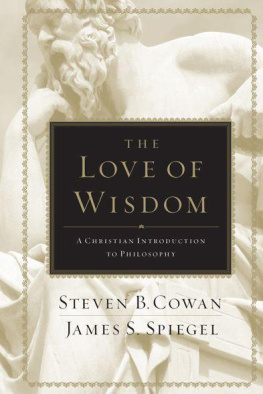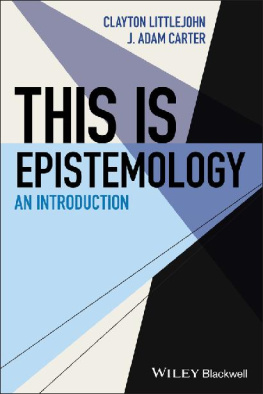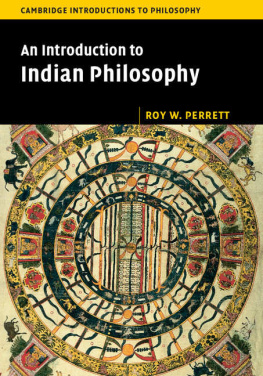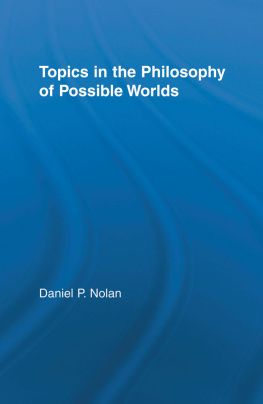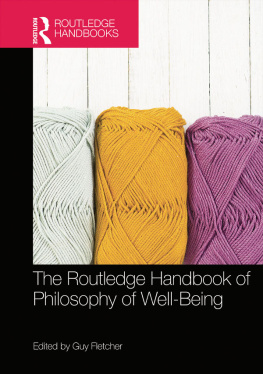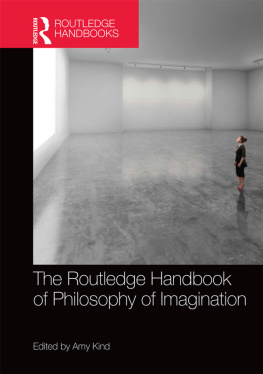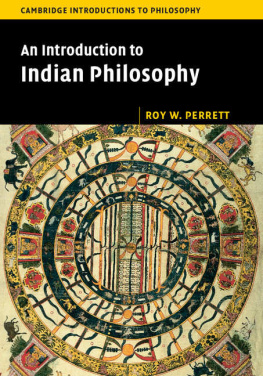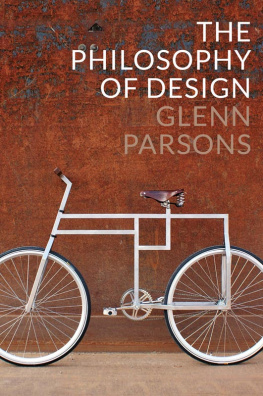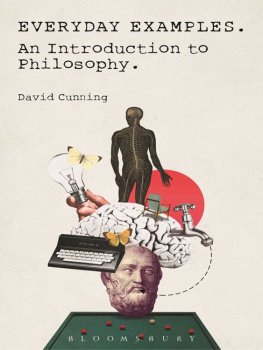The Philosophy of Art
The Philosophy of Art
An Introduction
THEODORE GRACYK
polity
Copyright Theodore Gracyk 2012
The right of Theodore Gracyk to be identified as Author of this Work has been asserted in accordance with the UK Copyright, Designs and Patents Act 1988.
First published in 2012 by Polity Press
Polity Press 65
Bridge Street
Cambridge CB2 1UR, UK
Polity Press 350
Main Street
Malden, MA 02148, USA
All rights reserved. Except for the quotation of short passages for the purpose of criticism and review, no part of this publication may be reproduced, stored in a retrieval system, or transmitted, in any form or by any means, electronic, mechanical, photocopying, recording or otherwise, without the prior permission of the publisher.
ISBN-13: 978-0-7456-8091-0
A catalogue record for this book is available from the British Library.
The publisher has used its best endeavours to ensure that the URLs for external websites referred to in this book are correct and active at the time of going to press. However, the publisher has no responsibility for the websites and can make no guarantee that a site will remain live or that the content is or will remain appropriate.
Every effort has been made to trace all copyright holders, but if any have been inadvertently overlooked the publisher will be pleased to include any necessary credits in any subsequent reprint or edition.
For further information on Polity, visit our website: www.politybooks.com
Contents
Preface
This book is genuinely introductory. It is intended for college and university students who have no previous exposure either to philosophy or to the specific subfield of philosophy of art. My overall aim is to present a basic overview of the field, balanced by an exploration of topics that are of interest to beginning students (such as the topics of creativity, authenticity, and popular art). My selection of topics and their relative emphasis is informed by three decades of classroom experience.
Philosophy has numerous subfields, such as logic, theory of knowledge, ethics, and philosophy of mind. Although they are unified by shared philosophical methods, these subfields diverge from one another in the core questions they address. Theory of knowledge explores the nature of knowledge, philosophy of mind raises questions about the nature of the mind, and so on. Philosophy of art is most readily understood as the philosophical pursuit of two fundamental questions:
What defines art?
What is artistic value?
However, this approach faces an obstacle. Philosophy of art is historically intertwined with a second discipline, aesthetics. The term aesthetics is often used as a shorthand way of designating philosophy of art. That equation is a mistake, because aesthetic concerns are not limited to art. (The tendency to equate the two inquiries may arise from the historical fact that the aesthetic theories of many philosophers have focused on art.) Another mistake is to think that aesthetics is limited to issues of beauty and ugliness. We will see that the field encompasses much more than that. Properly understood as a distinct philosophical subdiscipline, aesthetics can be provisionally understood to focus on these two questions:
What defines the aesthetic?
What is aesthetic value?
This book is an introduction to philosophy of art rather than aesthetics. However, the fields overlap, so a general guide to philosophy of art is, by default, an introduction to aesthetics.
Anyone with an interest in the arts will have encountered some of the issues discussed here. At the same time, it is likely that some of the issues explored here will be surprising. The very range of issues may be surprising. However, a moments reflection on the wide range of activity called art does a lot to explain why there is such a range of topics. Painting and music and literature are obviously very different as art, involving distinct materials and appealing to distinct modes of sensory perception, so it is not surprising that different issues arise for the different arts. A second reason for the wide range of issues is that philosophy of art does not proceed in a philosophical vacuum. Many debates arise within philosophy of art as the result of debates in other philosophical subdisciplines. Developments in theory of knowledge, philosophy of language, and metaphysics have regularly influenced and redirected philosophizing about art. As a result, contemporary philosophy of art is not a particularly systematic field of inquiry. A glance at the table of contents will reveal that only three chapters of this book concentrate on the questions that Ive just provided as indications of the central concerns of aesthetics and philosophy of art. To the extent that those questions stand at the center of the enterprise, the organization of this book reflects my conviction that some of the most interesting work is happening at some distance from that center.
Because this is an introduction, my primary goal is to outline major topics. A secondary goal is to outline debates within those topics. Philosophy is not just a set of theories. For practicing philosophers, philosophy is the activity of philosophizing. It is the active debate that arises in defending and criticizing theories. In addition to presenting the major theories on each topic, this book presents the most important arguments for and against those theories. For the most part, I avoid taking sides in these debates. However, decisions about what and who to cover can never be entirely neutral, so I owe it to you, the reader, to be honest about my basic prejudices. The general focus here is contemporary Anglophone philosophy, which is to say that the focus is philosophy of art as pursued in English in recent years. There is a strong emphasis on analytic philosophy and a lesser emphasis on its historical sources, with very little space devoted to a second stream of contemporary philosophy, the Continental tradition. It is extremely difficult to present Continental philosophy at the introductory level, and its general omission from this book will not surprise philosophy instructors in the Anglophone tradition. As a general rule, I have concentrated on the methodology and topics that one normally encounters at meetings of the American Society for Aesthetics and the British Society for Aesthetics, and in their respective publications, the

